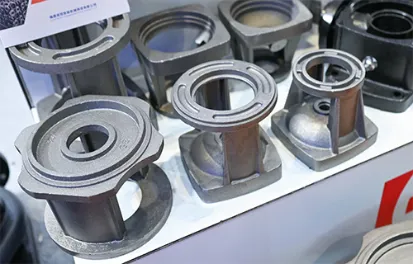Mobile:+86-311-808-126-83
Email:info@ydcastings.com
English
what is forging and casting
Understanding Forging and Casting Two Key Manufacturing Processes
In the realm of manufacturing, two foundational processes—forging and casting—play pivotal roles in shaping metal materials to meet diverse engineering specifications and applications. Each method offers distinct advantages and is suited for different types of products. Understanding the nuances of forging and casting not only provides insight into their individual processes but also highlights their significance in modern engineering and manufacturing.
What is Forging?
Forging is a manufacturing process involving the shaping of metal using localized compressive forces. Typically performed at high temperatures, this method enhances the ductility of the metal, making it easier to shape. Forging can be classified into several categories, including open-die forging, closed-die forging, and impression-die forging, each tailored to specific manufacturing needs.
In open-die forging, the metal is deformed between flat dies, allowing for a wide range of shapes and sizes. This method is particularly suitable for large components like shafts and blocks. Closed-die forging, on the other hand, employs two or more dies that entirely enclose the material. This technique is ideal for producing intricate parts with precise dimensions, such as gears and connecting rods.
One of the primary advantages of forging is the mechanical properties it imparts to the metal. The deforming process aligns the grain structure, enhancing the strength and toughness of the finished product. This makes forged components more reliable and durable, often used in applications where high performance is critical, such as in the aerospace and automotive industries.
What is Casting?
Casting is another vital manufacturing process, involving the pouring of molten metal into a mold cavity to create a desired shape. Once cooled and solidified, the metal takes on the form of the mold. Casting can be categorized into various methods, including sand casting, investment casting, and die casting, each catering to different requirements in terms of precision, complexity, and production volume.
what is forging and casting

Sand casting is one of the most widely used techniques, known for its versatility and cost-effectiveness. It involves creating a sand mold that can be reused multiple times. Investment casting, also known as lost-wax casting, offers higher precision and finer detail, making it suitable for producing intricate parts such as turbine blades. Die casting, commonly used for aluminum and zinc alloys, involves forcing molten metal into a steel mold under pressure, resulting in high-volume production of uniform parts.
While casting provides the advantage of intricate designs and shapes, it may not achieve the same mechanical properties as forged parts. However, modern advancements in casting technologies have significantly improved its performance, enabling manufacturers to produce components that require a balance between design complexity and strength.
Comparing Forging and Casting
Both forging and casting are integral to modern manufacturing, each with its strengths and limitations. Forging typically offers superior mechanical properties, making it ideal for high-stress applications. It is also often more cost-effective for lower-volume production due to less waste material generated during the process. However, forging can be more time-consuming and may require significant tooling investments, especially for complex shapes.
Casting, in contrast, excels in creating intricate designs and is more suitable for mass production. It allows for greater flexibility in material selection and can accommodate a wider range of shapes and sizes. The trade-off, however, often lies in the potential for defects such as porosity and inclusions, which may affect the mechanical integrity of cast parts.
Conclusion
In summary, both forging and casting are essential processes in the manufacturing landscape, each offering unique advantages to suit specific applications. Understanding these processes helps engineers and manufacturers choose the most appropriate method based on the requirements of strength, design complexity, and production volume. As technology continues to advance, both forging and casting will evolve, enabling the creation of ever more innovative and efficient products.
-
Materials Used in Manufacturing Cap End Pipe FittingsNewsNov.24,2025
-
Material Properties of CF8M CastingNewsNov.24,2025
-
How to Inspect Pump Cap Ends for DamageNewsNov.21,2025
-
Backward Curved Impeller – Efficient Airflow Solutions for Industry | YD CastingsNewsNov.21,2025
-
Automobile Water Pump - Efficient, Quiet, Durable & ElectricNewsNov.21,2025
-
Impeller for Pumps – High-Efficiency, Durable, OEM-ReadyNewsNov.21,2025











